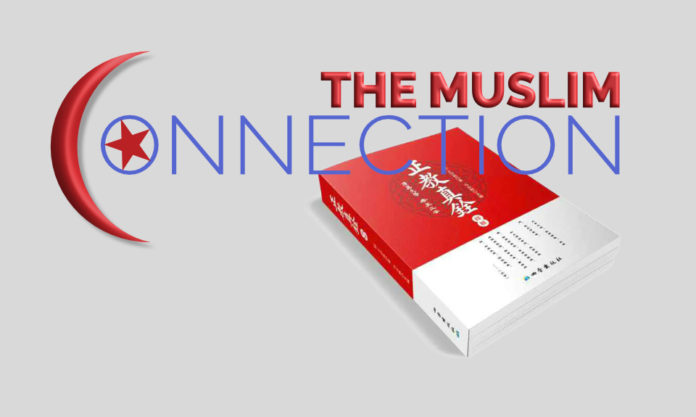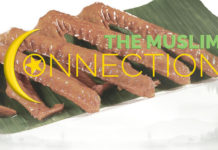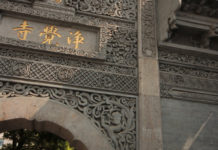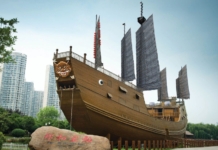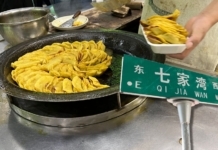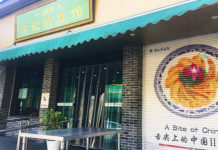By the late Ming dynasty, the highly culturally and linguistically-assimilated Muslim communities of Nanjing presented a new problem. There existed a cavernous gap between existing Arabic/Persian-medium Islamic texts and the Sino-Muslim Chinese-speaking practitioners illiterate in those languages.
In Nanjing, this particular phenomenon manifested into a situation where most Sino-Muslim elites were well-versed in the Chinese classics but had little to no understanding of Islamic texts due to the linguistic entry barrier.
Towards the end of the Ming Dynasty, in the mid-sixteenth century, a Sino-Muslim intellectual by the name of Hu Dengzhou (胡邓州), based near modern-day Xi’an, established the “Scripture Hall Education” (jingtang jiaoyu; 经堂教育), a system tied to mosques that ultimately taught Islamic knowledge through the Chinese language. In the first such school, the system came to include 14 texts (8 in Arabic and 6 in Persian), using a Sinified transliteration system to make works accessible to native Chinese speakers.
This overall mass push towards translating Arabic and Persian texts or classics and making Chinese-medium Islamic teachings became the theme of the late Ming/early Qing Dynasty amongst Sino-Muslim literati in the country.
After Hu’s work in establishing this Islamic educational system, a 4th-generation graduate named Ma Junshi brought it back home to his native Nanjing.
Thanks to their proximity to the Chinese dynastic capital and culture, Nanjing’s Muslim communities were unique in their rich intellectual life and social circles. Most Nanjing Muslims were largely driven, like their non-Muslim counterparts, towards the imperial examination system, steeped in Confucian learnings and texts, to become recognised in society. And unlike the Northwestern or Southwestern Muslim communities, Nanjing Muslims saw a strong interest in obtaining official imperial recognition for the Islamic identity, a strategy that Sino-Muslim scholars, such as Jonathan Lipman, believe may have ultimately helped protect Muslim communities as Qing China grew increasingly hostile and repressive.
It was into this setting that one of the most influential Nanjing Muslim intellectuals arrived on the scene. Wang Daiyu (王岱舆), born sometime between 1573 and 1619 CE to an Arab or Persian-lineage family who traced its arrival to the early Ming, became the first to publish the debut Islamic classic in the Chinese language in 1642. Scholars such as Sachiko Murata believe that the local Nanjing Muslim community likely had little issue with practicing the ritualistic elements of the faith such as prayer/fasting given that most local writings omitted these aspects, unless it was to defend such practices from a philosophical point of view.
In this scene of well-educated Sino-Muslims, and compared to other pioneering Sino-Muslim writers/translators of the time, Wang stood out due to his approach of using the existing Neo-Confucian knowledge of his community to critique its philosophical limitations and argue that Islam was a more completed form.
In the introduction for his first book, Wang claimed that his ancestor first arrived in Nanjing some 300 years earlier in the Ming Dynasty and impressed the Hongwu Emperor by fixing the calculations in the his astronomy and calendars.
As thanks, the emperor bestowed Wang’s ancestor with a residence near today’s Hongwu Nan Lu as a supervisor of the Imperial Observatory.
Wang eventually came to study under Ma’s tutelage. Proficient in Arabic and Persian, Wang claims to have only had sufficient understanding of Chinese to correspond by the age of 20, and was ashamed that he could not sufficiently critique the classics with his language against other well-educated Muslims. This led to a rapid pursuit of learning in his 30s that resulted in “mastery of the four teachings and doctrines of various schools”, according to one of his later students.
In Wang’s first book, “Real Commentary on the True Teaching” (正教真诠), he wrote 40 essays (20 on philosophy/religion and the other 20 on rituals and laws) that referred to and quoted the Qur’an, classic Chinese texts and still more Arabic/Persian texts in order to create a commentary that aimed to show Islamic monotheism was just an extension and completed form of the Confucian system, such as his integration of the Five Pillars of Islam with the Five Virtues of Confucianism and use of Confucian terms with added nuance to describe Islamic principles.
Wang went on to produce several works that recorded his debates/conversations and were later compiled by his students.
Though Wang lived and taught primarily in Nanjing, he ultimately moved to Beijing after the Qing Dynasty invaded in 1645.
He eventually became established there, invited as a guest teacher by a wealthy Muslim merchant who enjoyed inviting scholars of all traditions to debate in frequent gatherings.
Wang was said to have been one of the most outstanding of these scholars. Eventually, Wang passed away and was buried in his patron’s family graveyard sometime around 1657-59.
Wang’s works were the start to a powerful, revivalist movement in the Nanjing Muslim literati community. Some of his works were ultimately incorporated into the Han Kitab (an amalgamation of “Han” meaning Chinese, and the Arabic term, “kitab”, for book), a collection of Chinese Islamic texts that were eventually used as the basis for systemic Chinese-Islamic education.
These works were some of the first writings to indicate the transformation of the Muslim presence in China from “foreign guest” to “local/insider”. And it was not long after his passing that a Qing Nanjing Muslim elite, Liu Zhi, grew from that rich Nanjing environment to become, as some scholars argue, the most famous Sino-Muslim writer. Liu becomes the focus for the next outing of The Muslim Connection.


